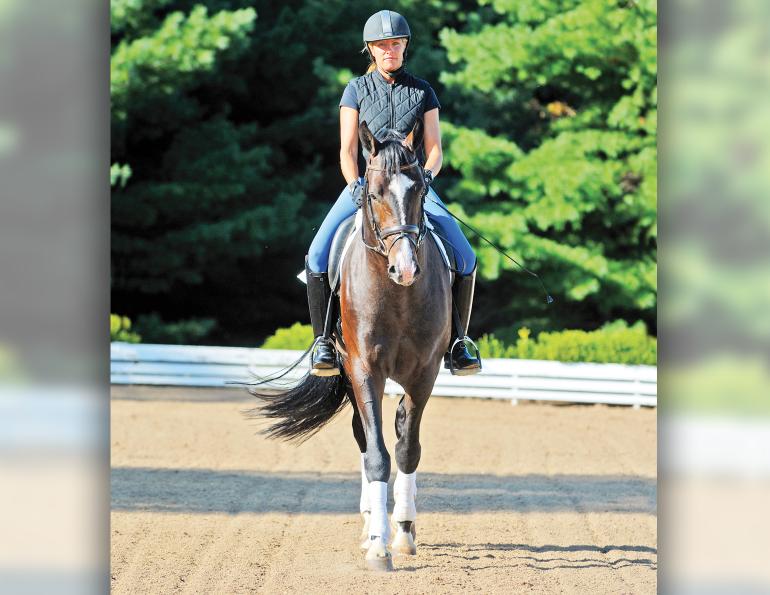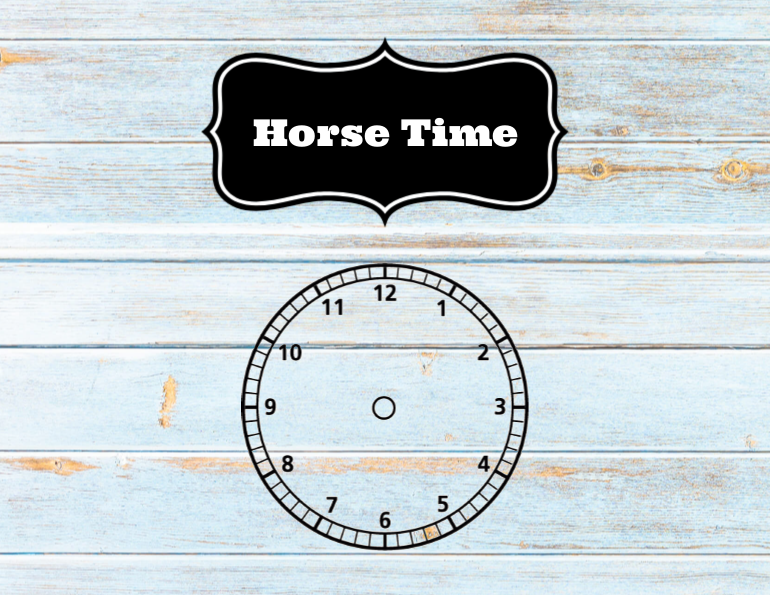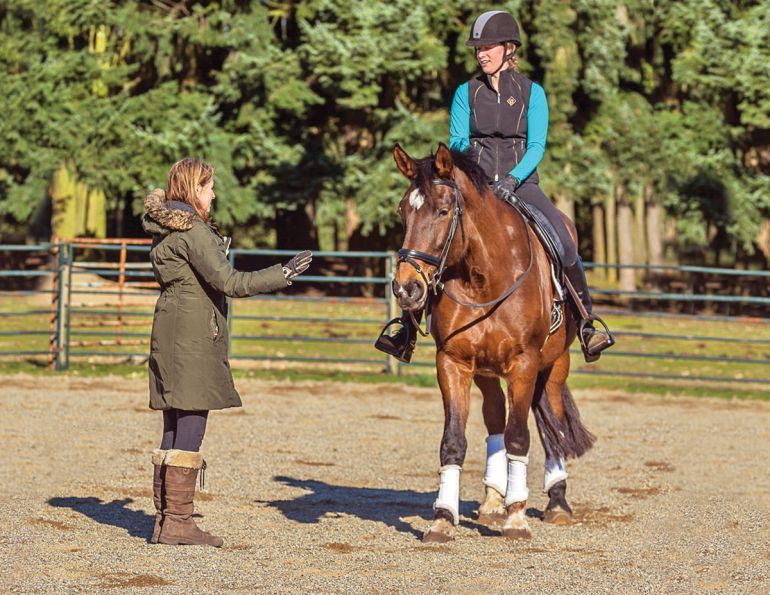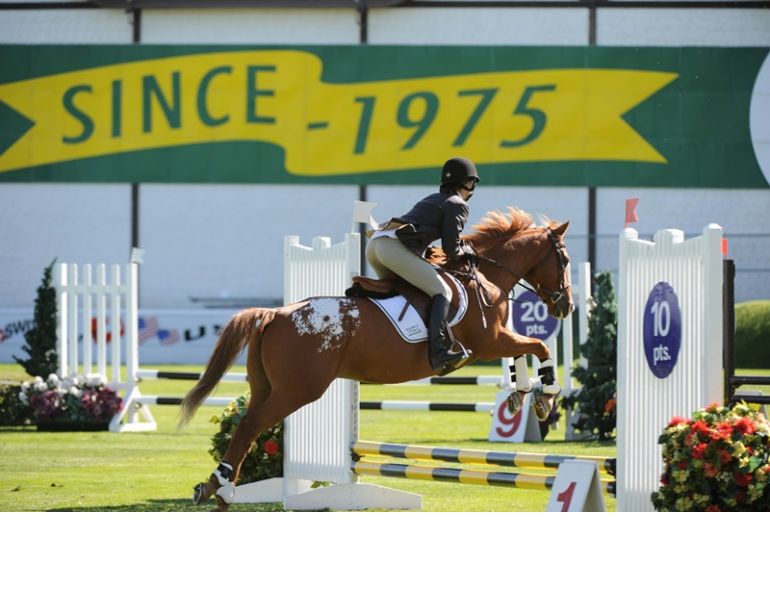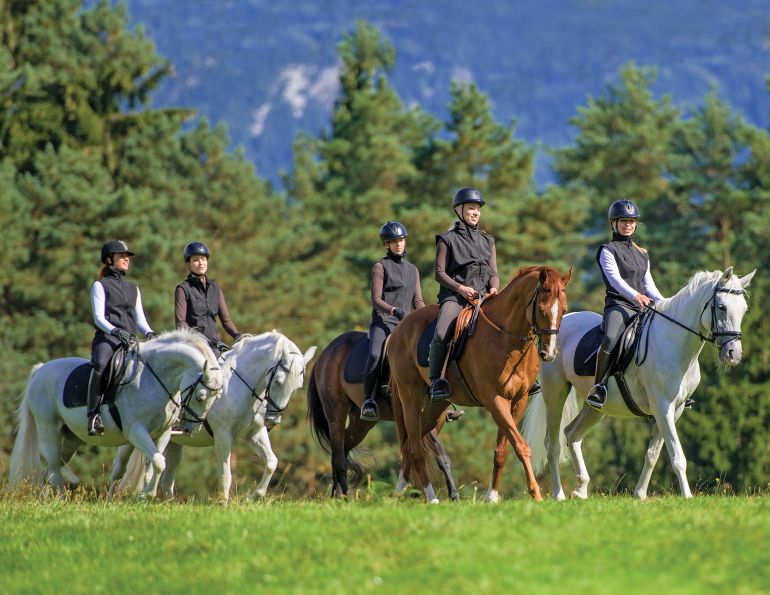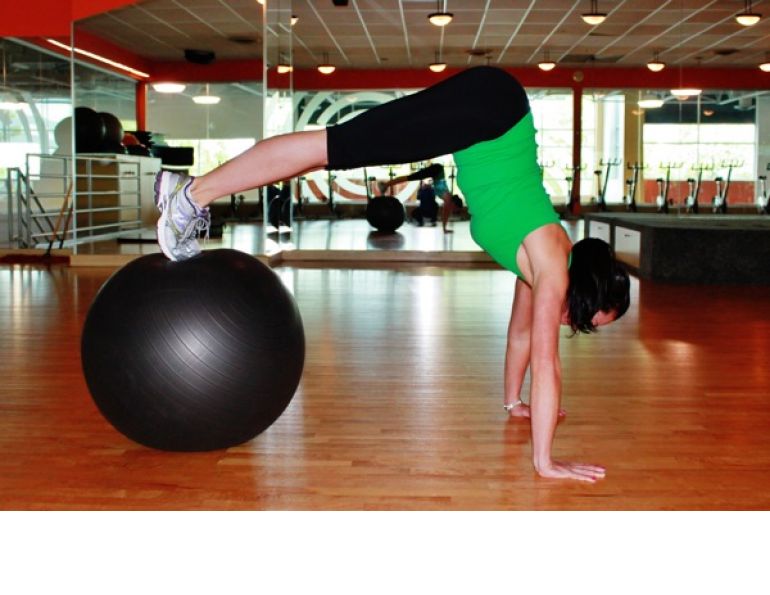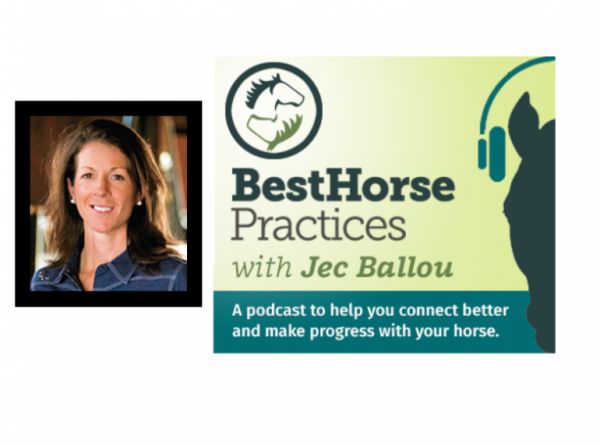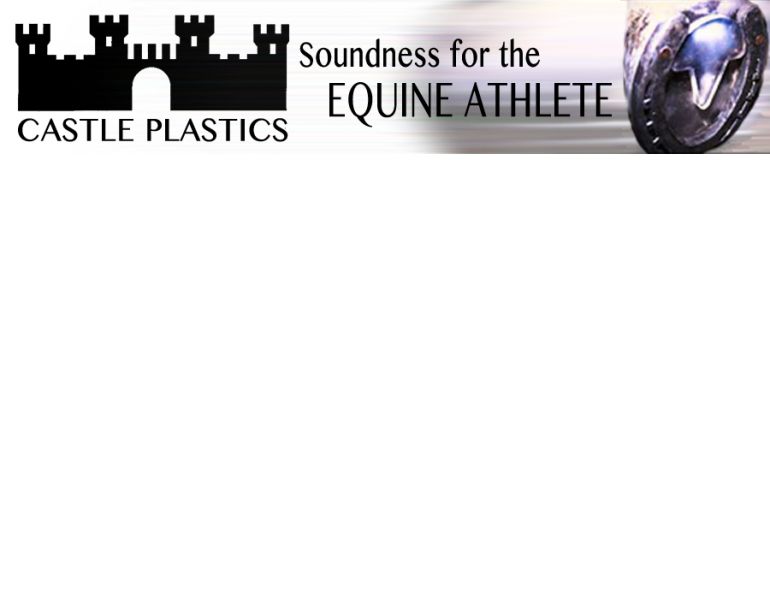By Alexa Linton, Equine Sports Therapist
As a rider, it can be tricky to discern exactly how much influence our structural alignment is having on our horse and our riding. The conversation about posture can be a complex and even frustrating one. In part, this is because we innately know that what is happening in our bodies can’t help but influence our horses, given their sensitivity to changes in weight and pressure, and the near impossibility of a rider being posturally “in tune” with their horse at every moment.
Posture, defined as the way someone holds their body while sitting or standing, often conjures visuals of pulling our shoulders back, standing tall, and taking on a near-military rigidness. Instead, we’re going to imagine it as a much more fluid concept, inclusive of freedom of movement, natural balance, and coordination. Ideally, in the saddle we will have a neutral pelvis supported on our seat bones, an aligned spine, the ability to take a full relaxed breath, and a sense of being supported by our skeletal structure without tension. Like our horses, most of us are carrying a variety of compensating and adapting postural patterns, dependent on environment, injuries or surgeries, stress levels, habitual movements, breathing patterns, and much more.
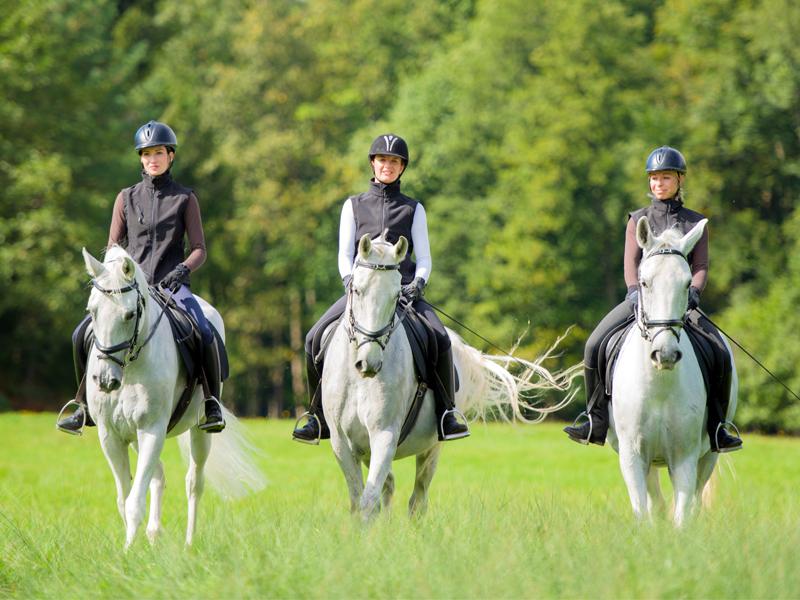
Riders should be mindful of their posture and consistently work to improve it. Most riders carry a variety of compensating and adapting postural patterns that impact their posture in and out of the saddle. Photo: iStock/SimonKR
The position and mobility of a structure tell a story of how functional that structure is. For our discussion today, we are more concerned with the functional movement of a structure, as is your horse. For example, positionally, the left side of my pelvis is high at all the main landmarks. But, if my pelvis is mobile, allowing it to be neutral and spine-aligned, and letting my body move freely, my mare Diva is happy to be ridden and is balanced on each rein. If my pelvis loses mobility, disrupting my ability to move with my horse, I notice an immediate change and resistance in Diva. Like myself, many of us may have body asymmetries that affect the position and/or the mobility of our structures and our posture.
Related: 11 Exercises to Improve Your Riding Position
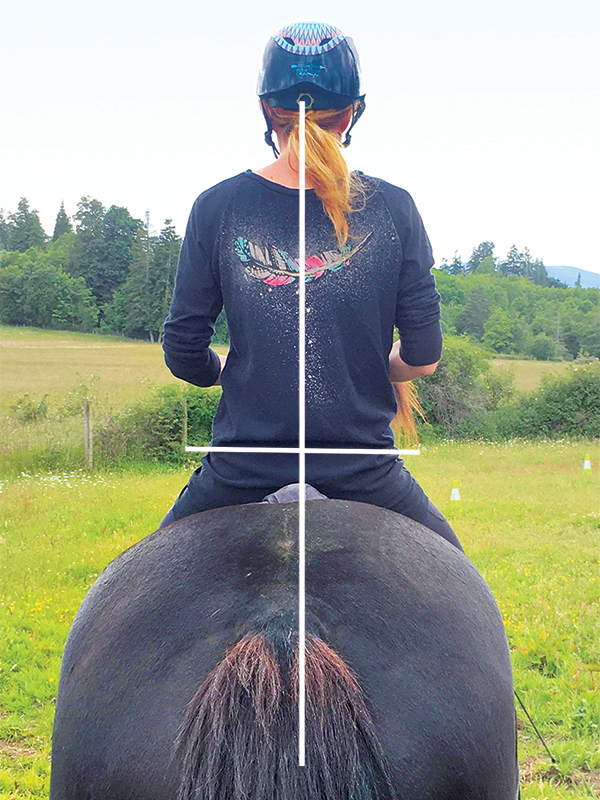
Aligned spine with slight asymmetry in pelvic landmarks (high on left). Horse helper is the beautiful Raven. Photo courtesy of Alexa Linton
Let’s take this example a little further by unpacking some of the reasons my positionally-asymmetrical pelvis might become limited in its mobility. First, I am prone to rigidity at the junction of the occiput and first cervical vertebrae, which causes my spine and pelvis to adapt to keep my eyes level and stay in a healthy relationship with gravity. With direct attachments in this region, the dural membranes running through the spine and attaching directly to the sacrum can restrict the mobility of my pelvis and my spine, especially when I am dehydrated or closer to my menstrual cycle. For riders who identify as women and have a cycle, or are in menopause, hormonal changes can have influences on your posture.
In this same vein, I have chronic tension at the root of the mesentery, which anchors my small intestine to the posterior abdominal wall. My tight mesentery has a habit of adhering to my uterus, which can impact my mobility and posture of my lumbar spine, sacrum, and pelvis. It’s important to realize that your organs and viscera can become adhered together due to injuries/impacts, surgeries (scar tissue), chronic stress or inflammation, or certain health conditions. Like most riders, I’ve been injured - in my case a disc injury at L4-L5, close to my centre of gravity and impacting my postural stability, and a tailbone which, like many riders, has seen its fair share of direct blows and is connected directly to the alignment and free movement of my spine. In my case, these factors cause me to have a hard time sitting in functional spinal alignment, moving my pelvis into a neutral position under my spine, finding my balance in the saddle, and rotating in my lower spine. My postural tendency is called an anterior type, where my chin is pulled out in front of my pubic symphysis, which affects my riding position and ability to balance in the saddle. A posterior type of posture would be the opposite, with the tendency for the chin to be behind the pubic symphysis.
Related: Develop a Stronger Riding Position
Posture is not as simple as get your shoulders back, get your heels down, and get your leg under you. Forcing these changes can create unnecessary tension in your system, reducing the effectiveness of your riding and the happiness of your horse. There are multiple variables in your own story that led you to your current posture, and it takes time and commitment to work with these variables in lasting ways to create an ever more functional and integral posture.
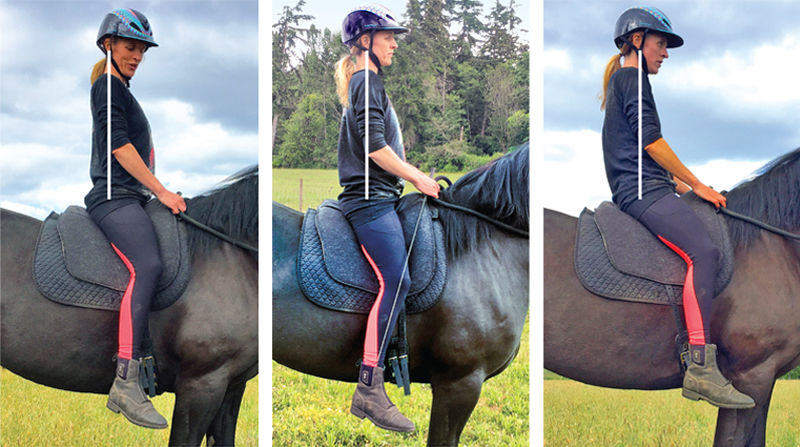
Left: Arched back and rigid spine, anterior tilt in pelvis. Centre: Aligned spine and neutral pelvis; Right: Collapsed posture, posterior tilt in pelvis. Photos courtesy of Alexa Linton.
How do we begin?
I will start by saying bluntly that if you plan to ride your horse, you need to also plan to work with your posture regularly and consistently, to ensure the well-being of your horse and yourself. As an equine sports therapist, most non-ridden horses I see are far more comfortable than their ridden counterparts, and I really hope to see that change in my lifetime. Since I’ve shared my unique posture story, I’ll also share my strategies for creating change, and some of the ways you can work with your posture as well.
Your daily practices - Every day I work with body awareness, stretching, breath work, and movement (including strength and coordination-building activities). Multiple times a day I do a full body scan, notice my areas of tension, and breathe into them. As riders, we need to have a consistent self-care practice. I highly recommend checking out the Feldenkrais Method and the Alexander Technique to work with body awareness and your breath in and out of the saddle. One of my favourite books on this related to riding is Centered Riding by Sally Swift.
Your team - You may be reading this thinking of the manual therapist who has changed your life and posture, and that’s awesome. But for many, it can be challenging to dedicate the money and time for regular body work, and to find a modality that is effective. For my body, the game changer was osteopathy. Before this work I didn’t realize that my organs could be part of my posture and mobility issue; that my sacrum and base of skull were completely locked; that there was a structure called the dura mater that was limiting my spinal and pelvic mobility; and that my riding posture was distinctly a tension-ridden, “toilet seat” position that was restricting/blocking the movement of my horse. Osteopathy is an investment, but my body and my horse thank me daily. Chiropractic, physiotherapy, acupuncture, massage, rolfing, or a combination can all be helpful - find what works best for your body. Ask your friends - referrals are my preferred way to find the right fit. Receive professional support around a specific stretching and strengthening practice that will improve your unique posture. Work with a riding instructor who can support you to grow your body awareness and cultivate functional and horse-friendly biomechanics in the saddle.
Your horse - Listen to your horse. If he is resistant on one lead, to collection, in transitions, to moving forward, or even to being ridden at all, he may be attempting to get a message across about your current posture and alignment. He may be telling you to begin with bodywork before riding is your priority. When you ride, start mindfully at a walk and find a neutral position in your seat bones and spine; feel your full breath, noticing the movement of your pelvis with each stride. Pay close attention to the responses of your horse and follow the relaxation. After all, the goal is for both horse and rider to enjoy themselves.
The conversation about posture is a huge one and we’ve just scratched the surface, but I hope you’re now thinking about what might work for you and what might be impacting your posture in and out of the saddle. Good luck and happy trails!
Related: Ride with Balance, Flexibility and Strength
To read more articles by Alexa Linton on this site, click here.
Main Photo: Clix Photography



